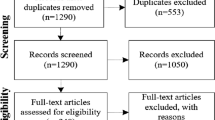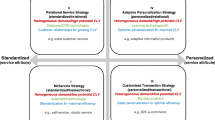Abstract
Telecommunication and Internet services are constantly subject to changes, seeking the customer’s full satisfaction. Enriching these services with innovative approaches such as context-aware, social, mobile, adaptable and interactive mechanisms enable users to experience a variety of personalized services seamlessly across different platforms and technologies. In this sense, Service Oriented Architectures play a central role in allowing component reuse and low cost service creation. Together with IP Multimedia Subsystem enable the convergence of telecommunications and web services, allowing the network transport technologies to be abstracted from the services above. By integrating these technologies, a number of synergies can be explored. Existing services can be easily enriched with context information, made available on a variety of networks and new services can be composed using previously existing building blocks. This paper explains how this integration can be achieved, and demonstrates the potentialities of this architectural paradigm with a prototype service.
Similar content being viewed by others
References
Baker, N., Zafar, M., Moltchanov, B., & Knappmeyer, M. (2009). Context-Aware Systems and Implications for Future Internet. In Future Internet conference and technical workshops, Prague, Czech Republic, May.
Camarillo, G., & Garcia-Martin, M. (2004). The 3G IP multimedia subsystem: merging the Internet and the cellular worlds. New York: Wiley.
Simoes, J., Goncalves, J., Mota, T., & Magedanz, T. (2009). CATS: Context-aware triggering system for Next Generation Networks, wireless and mobile networking (Vol. 308/2009, pp. 251–262). Boston: Springer.
Google Mail Privacy Policies (2009). Targeted Ads in Google Mail. http://mail.google.com/mail/help/intl/en_GB/about_privacy.html.
Aquity Mobile (2009). http://www.acuitymobile.com/solutions/spot_relevance.php. (last accessed, Nov. 2009).
Kaasinen, E. (2003). User needs for location-aware mobile services. In Personal and ubiquitous computing. Berlin: Springer.
Ahn, Y. (2008). Design of a mobile object data management framework for location enhanced applications. In International conference on convergence and hybrid information technology (pp. 270–273).
Kukhun, D., Soukkarieh, B., Lopes-Ornelas, E., & Sedes, F. (2008). LA-GPS: A location-aware geographical pervasive system. In 24th IEEE international conference on data engineering workshop, Cancun, Mexico (pp. 160–163).
Meng, S., Chen, W., Liu, G., Wang, S., & Wenyin, L. (2008). An asset management system based on RFID, WebGIS and SMS. In Proceedings of the 2nd international conference on Ubiquitous information management and communication (pp. 82–86). New York: ACM Press.
Facebook (2010). www.facebook.com.
Hassenzahl, M., & Tractinsky, N. (2006). User experience—a research agenda. Behaviour & Information Technology, 25(2), 91–97.
Kelkki, K. (2008). Quality of experience in communications ecosystem. Journal of Universal Computer Science, 14(5), 615–624.
Jamali, M., & Abolhassani, H. (2006). Different aspects of social network analysis. In Proceedings of the IEEE/WIC/ACM international conference on Web intelligence, Dec. 2006 (pp. 66–72).
Sorensen, L., & Skouby, K. (2008). Next generation social networks—elicitation of user requirements. In IEEE 19th international symposium on personal, indoor and mobile radio communications, Sep. 2008 (pp. 1–5).
Owyang, J., Bernoff, J., Pflaum, C., & Bowen, E. (2009). The future of the social Web (Forrester Report). April.
Eagle, N., Pentland, P., & Lazer, D. (2009). Inferring friendship network structure by using mobile phone data. Proceedings of the National Academy of Sciences of the United States of America, 106(36), 15274–15278.
Shujun, D., Liang, L., & Chengqi, C. (2008). Research on Geographical Information Service Based on SOA. In Proceedings of the IEEE international conference on automation and logistics, Qingdao, China.
Brajdic, A., Lapcevic, O., & Matijasevic, M. (2008). Service composition in IMS: a location based service example. In 3rd international symposium on wireless pervasive computing, IEEE, Santorini, Greece (pp. 208–212).
3GPP TS 23.228 (2008). Service requirements for the Internet Protocol (IP) multimedia core network subsystem (IMS); stage 1. Release 9, 2008-12-19.
Blum, N., Magedanz, T., Schreiner, F., & Wahle, S. (2009). From IMS management to SOA based NGN. Journal of Network and Systems Management, 17, 33–52.
3GPP TR.32.808 (2008). 3rd generation partnership project: technical specification group services and system aspects; telecommunication management; study of common profile storage (CPS) framework for user data for network services and management (Release 8).
Calhoun, P., Loughney, J., Guttman, E., Zorn, G., & Arkko, J. (2003). Diameter base protocol. IETF RFC 3588.
Requirements and concepts for context detection and context-aware multiparty transport. (2008). In Deliverable 6-C-CAST: content casting, European project ICT-2007-216462.
Chen, H. (2004). An intelligent broker architecture for pervasive context-aware systems. PhD Thesis, University of Maryland, Baltimore County.
Goncalves, J., Moltchanov, B. et al. (2009). Context management architecture for future Internet services. In ICT mobile summit 2009, Spain.
Antoniou, J., Simoes, J. et al. (2009). Context-aware multiparty networking. In ICT mobile summit 2009, Spain.
Brickley, D., & Miller, L. (2007). Friend of a friend, FOAF vocabulary specification 0.91. http://xmlns.com/foaf/spec/.
BEA WebLogicS̈IP Server (2010). Converging Internet, SOA and next-generation telecom services. www.bea.com/sip.
FOKUS Open SOA Telco Playground (2010). http://www.opensoaplayground.org.
Open IMS Playground (2010). www.open-ims.org.
FOKUS Presence Server (2010). www.open-ims.org/presence.
FOKUS Converged Open Messaging Server (2010). www.open-ims.org/coms.
Blackshaw, P. (2008). The Global Village, Virtually Realized: Social networking engages users. In Nielsen online customer insight, May.
Global Mobile Forecasts to 2013 Worldwide Market Analysis, Strategic Outlook & edForecasts to 2013. In Informa telecoms & media reports/forecasts, December 2008.
Author information
Authors and Affiliations
Corresponding author
Rights and permissions
About this article
Cite this article
Simoes, J., Magedanz, T. Contextualized User-Centric Multimedia Delivery System for Next Generation Networks. Telecommun Syst 48, 301–316 (2011). https://doi.org/10.1007/s11235-010-9345-8
Published:
Issue Date:
DOI: https://doi.org/10.1007/s11235-010-9345-8




